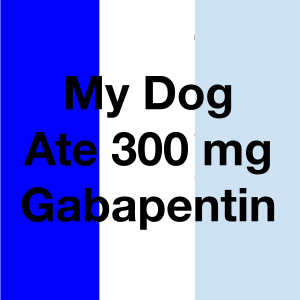
Every pet parent whose pet suffers from arthritis understands the amount of pain and discomfort associated with the condition.
Metacam is often prescribed for dogs and cats with inflammation, pain from an injury or osteoarthritis.
Even as Metacam helps to manage pet arthritis, no one wants a medication with unpleasant side effects for their pet.
As an anti-inflammatory drug, Metacam is pet-friendly and works amazingly-well to relieve pain.
Luckily, it doesn’t cause sleepiness or very negative reactions in pets, but it does have some mild side effects, just like most other medications.
Interested in finding out more about Metacam?
Stick around for a few more minutes!
What is Metacam?
Metacam (Meloxicam) is a non-steroidal anti-inflammatory drug (NSAID) used as a type of painkiller to relieve pain, inflammation, and fever in dogs, cats and other animals.
It is prescribed to treat osteoarthritis in canines and felines.
Meloxicam is also used after surgical operation to relieve pain.
It’s available as chewable tablets and an easy-to-give oral liquid for dogs.
For cats and guinea pigs, Metacam is only available in the convenient liquid formulation because most cats and guinea pigs do not readily accept tablets.
This medication is one of the commonly prescribed NSAID by vets in the UK to treat arthritis in dogs and cats. It is also available for human use, under the brand names Mobic® and Mobicox®.
How is it used in dogs?
Dogs are treated with Meloxicam (Metacam) for inflammation and osteoarthritis-related discomfort.
Canine osteoarthritis is a disorder where the cartilage in a joint wears down over time, resulting in painful swelling around the joint and higher fragility in the bones attached to the affected joint.
About 1 in 5 older dogs have osteoarthritis, which is the primary cause of chronic discomfort in older dogs.
Meloxicam, the active component of Metacam, stops the body from producing the hormone cyclo-oxygenase (COX). COX are responsible for the production of prostaglandins, which are a class of molecules that contribute to pain and inflammation.
Metacam provides relief for dogs by inhibiting the production of the chemicals causing pain and inflammation.
Why can it make dogs sleepy?
Sleepiness is not a common side effect of Metacam.
However, Metacam overdose may result in mild drowsiness.
It’s important that you properly administer Metacam (or any other medication), use only the dosage prescribed by your vet.
If a dose is missed, it should not be doubled in the subsequent dose, but rather should be completely missed.
Never give your dog more than what your vet recommended, this will help prevent undesirable side effects from an overdose.
While drowsiness is not one of the negative effects of Metacam, call your veterinarian’s office right away if you believe there has been an overdose or a negative reaction to the medication, or if you notice that your dog is lethargic or drowsy after taking the medication.
What are the other main side effects of Metacam?
In dogs, gastrointestinal distress, including vomiting, loose stools, and loss of appetite, are the most common side effects of meloxicam.
More severe negative consequences can occasionally happen.
Here are some of the most common side effects to watch out for if your dog is on Metacam prescription:
- Change in bowel habits (diarrhea, black, or blood-stained stools)
- A shift in behavior (aggression, seizure, increase or decrease in energy levels)
- Jaundice (yellow discoloration of the white areas of the eyes, pale gums and skin)
- Increase in water intake or frequent urine (including change in urine color, or smell)
- Skin sensitivity (redness, scabs, or scratching)
- Stomach ulcers could develop
- Weight loss
Meloxicam should not be administered to puppies, lactating dogs or dogs who are allergic to aspirin or other NSAIDs.
If you suspect your dog is experiencing any negative effects or medical issues while taking Meloxicam, it’s recommended to stop the medicine and call your veterinarian right away.
Are there alternatives to Metacam?
There are a few non-steroidal anti-inflammatory drugs (NSAIDs) that can be used to train pain and inflammation in place of Metacam.
Here are the 4 most common NSAIDs used as Metacam alternatives.
Carprofen (brand names: Novox or Rimadyl): Carprofen is used to treat pain and inflammation in dogs and a variety of animals. It has been proven to be clinically effective for the alleviation of symptoms associated with osteoarthritis in dogs, and is approved by the U.S. Food and Drug Administration for the management of pain and inflammation in dogs. Dogs given carprofen may experience gastrointestinal disturbances, such as minor vomiting, diarrhea, constipation, and momentary loss of appetite as side effects.
Deracoxib (brand name: Deramaxx): Deracoxib is administered to dogs after a surgical procedure (such as orthopedic and dental procedures) to lessen the discomfort caused by surgery and to treat osteoarthritis and other painful disorders or injuries. Deracoxib is offered as a chewable tablet for oral use. Deracoxib, like other NSAIDs, can negatively affect the digestive system, the most frequent of which are diarrhea, vomiting, appetite loss, and weight loss.
Firocoxib (brand names: Previcox or Equioxx): Firocoxib is used to relieve pain and inflammation in dogs and other animals. The most typical conditions for which it is used are arthritis and pain following injury or surgery. Firocoxib is administered orally as a chewable tablet or oral paste, though it can alternatively be made into a liquid. The most common side effects are vomiting and decreased appetite. There are more severe side effects as well, such as persistent nausea or vomiting, changes in bowel movement, behavioral changes, frequent urination, and jaundice.
Grapipant (brand name: Galliprant): this is another Metacam alternative given to dogs with canine osteoarthritis might take grapiprant to relieve their pain and inflammation. Grapiprant is administered orally in the form of tablets. Vomiting, diarrhea, a loss of appetite, blood or mucus in stool, are some of the side effects of this medication.
Will these alternatives make dogs drowsy?
Like Metacam, most NSAIDs do not make dogs drowsy. NSAIDs typically have little negative side effects and are safe for dogs. But occasionally, they can aggravate or even cause digestive, liver, or renal issues.
If your dog is reacting poorly to an NSAID, you might be able to tell, here are signs to watch out for:
- Changes in behavior
- Loss of appetite
- Skin rashes and scabs
- Diarrhea, vomiting, and tarry stools
What is the correct dosage of Metacam?
Your vet will determine the correct dosage for your dog depending on their unique medical needs and body weight.
Metacam typically comes in oral suspension form with a strength of about 5 mg, but it may also come in pill form, and can be added to your dog’s food. Your vet will advise you on the best form to use and method of administration.
On the first day, a dose of between 0.09 and 0.1 mg/lb is often given to dogs, followed by a lesser dose taken orally once daily at a rate of between 0.045g and 0.05 mg/lb from that point on. Make sure to follow the instructions of your veterinarian, and ask for clarification if the instructions are unclear.
Is it possible to overdose on Metacam?
Every medication has dosage guidelines and potential side effects, therefore, pet owners should be aware of the dosing recommendations and potential negative effects of Metacam. Serious negative reactions like vomiting, dizziness, and fainting can result from a Metacam overdose.
How long does it take for Metacam to begin to work?
One of the major advantages of Metacam is its fast action. Once given, a dog can begin to feel relief within 1 or 2 hours. Metacam is typically given to dogs orally in liquid form. You can easily administer the medication to your dog with a calibrated syringe. Your vet will communicate the appropriate dosage for your dog, which will be determined by your dog’s specific medical needs.
How long can a dog safely use Metacam for?
Canine osteoarthritis often requires long-term treatment for at least 3 months, and sometimes a dog may need lifelong therapy to treat their arthritis.
Depending on the severity of your dog’s condition, your vet will advise you to use Metacam for a predetermined amount of time as part of the recommended treatment approach. You may also be asked to give regular reports on the efficacy of the medication to determine if the treatment should be continued.
If your dog has osteoarthritis, it will probably have to deal with it for the remainder of their life, just like people who suffer the same condition. Given that Metacam has been successfully used for more than 20 years to treat dogs with osteoarthritis all over the world, you can use it with confidence.





